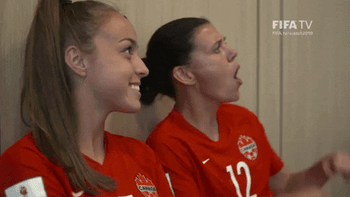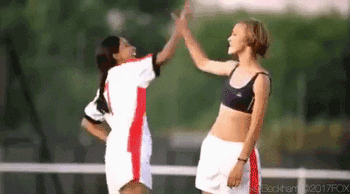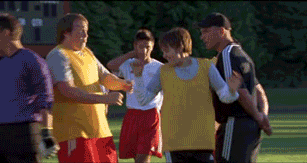Commercial partners are more interested than ever in women’s soccer

⚽ Player-focused branding
NWSL CMO Julie Haddon knows all about the league’s awareness battle. She attended a WWC match when she was an NFL exec in 2019 but, despite recognizing several players, “did not know that there even was an NWSL,” or how to follow the WWC stars once the quadrennial tournament was over.
So it comes as no surprise that the NWSL’s marketing approach is “player-first” under Haddon’s leadership. “We don't want people to know just about a handful of them. We want them to know about all of them,” she said. Haddon believes the strategy allows the NWSL to “build our brand first instead of just being about a media repository for the sponsors.”
To this end, the league partnered with digital media management company Greenfly in January to supply each NWSL player with matchday photos and videos for their social media accounts and will dispatch live content correspondents (LCC) at every game to capture unique footage for players and the league.
- This marks an expansion of an LCC initiative that began during the 2022 playoffs, when the content correspondents created garnered 15M eyeballs on social media, per Haddon. Going viral.
- Haddon reiterated that “whether you're a big star and you have your own resources and production company or you're somebody who's brand new in the league, you're going to have access as a player to all these different things.”
Athlete-focused storytelling will allow the NWSL to take full advantage of the WWC spotlight. The league is planning a campaign around players competing in Australia and New Zealand this summer and plans to boost organic, league-specific narratives that they hope will earn some headlines outside of the WWC.
Ultimately, a player-first strategy aligns seamlessly with the NWSL’s goal to be the best women’s soccer league in the world, especially as the sport earns more global attention and investment. “My vision is that, from a competitive standpoint, from a brand standpoint, from a consumption and fan growth standpoint, all of these metrics are at the top,” Haddon said.
📈 Meeting the moment
This WWC year is different from ones before it, per Wasserman EVP of women’s sports Dan Levy, who reps superstars Alex Morgan and Megan Rapinoe: “The World Cup, from a standpoint of being a critical beacon, is just not as important” to marketing the sport as it once was. Increased interest in women’s soccer means year-round, every year opportunities.
- Popularity for the sport surged in the U.S. after the USWNT’s trip to the 2011 WWC final and throughout their championship runs in 2015 and 2019 and conveniently coincided with the rise of social media.
- “Now you have individual soccer players who have their own platforms, from a social media standpoint, that didn't even exist back then,” Levy said.
The democratization of social media has reinvented sports marketing opportunities. “Athletes have always had different abilities to be connected directly to the consumer, but oftentimes in the past have had to go through brands,” per Thayer Lavielle, EVP of The Collective. “You're on a box of cereal or you're being ushered into a household through a brand.”
- However, Lavielle said, “athletes just do it now through Instagram or through Twitter or through TikTok. That's a vastly different proposition. … The tables have kind of turned and athletes own the game in many ways.”
This also translates into a multipronged injection of cash into women’s soccer, according to Wasserman EVP Richard Motzkin: “It might have been that these players were getting five-figure opportunities and now they're six figures.” Motzkin also recognized a marked increase in the number of players receiving sponsorships.
- “Maybe before it was half a dozen really getting [those deals],” he added. “Whereas now, it's much more spread out, and you will have a dozen-plus players on the U.S. women's national team who are earning significant income.” A rising tide.
Tentpole events like the WWC are a launching pad for investment in the entire women’s soccer ecosystem. “[There’s] not only interest in supporting women as football players but also [as] women,” Lavielle said. “This World Cup, in particular, feels much more important because of the equal pay conversations. … This will continue to be a big conversation on a global stage.”
Players’ dominance on the field and cultural relevanceoff it has lifted the sport as a whole, opening the door for investment that’s not strictly tied to the WWC and the Olympics. Year-round interest means leagues like the NWSL allow brands to continue supporting athletes they’re already invested in. Signs of health.
🔢 By the numbers
The NWSL kicked off a year of pivotal marketing campaigns with January’s NWSL draft in Philadelphia, its first IRL version of the event in three years. Long story short? It did numbers, according to Haddon.
10B: Haddon said the NWSL earned 10B impressions (!!!) from draft-related social media content.
72%: The increase in social media impressions compared to last year, when the draft was hosted remotely by CBS Sports. The NWSL also increased its content opportunities by rolling out a red carpet hosted by renowned women’s sports journalist Ari Chambers.
113%: Fan attendance for the draft at the Pennsylvania Convention Center surpassed the league’s goals by 113%. Philly loves its sports.
119%: Draft viewership numbers jumped 119% YoY on streaming. Paramount+, the NWSL’s site and YouTube, and CBS Sports HQ’s YouTube channels all streamed the event.
Enjoying this article? Want more?

Sign up for The GIST and receive the latest women's sports business news straight to your inbox three times a week


